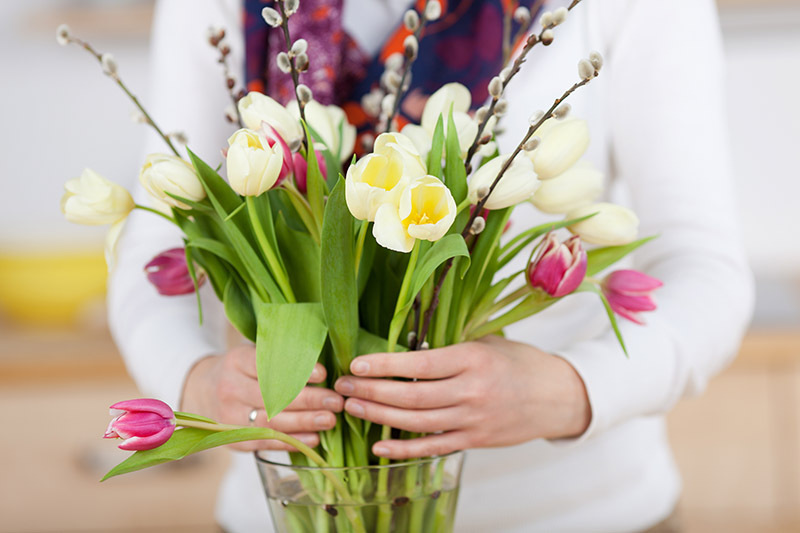Tips for Sustaining the Life of Your Poinsettias
Posted on 20/08/2025
Tips for Sustaining the Life of Your Poinsettias
Poinsettias, with their vibrant red, pink, or white bracts and lush green leaves, are beloved houseplants especially popular during the holiday season. Many people enjoy them as festive decor, but few know the secrets to keeping poinsettias healthy far beyond the winter months. If you want to enjoy your poinsettia's beauty year-round, it's crucial to understand how to care for them properly. This comprehensive guide offers essential and advanced tips for sustaining the life of your poinsettias so they thrive in your home.

Understanding the Poinsettia: A Brief Overview
The poinsettia (Euphorbia pulcherrima) is indigenous to Mexico and Central America, where it flourishes as a perennial shrub. Its colored 'flowers' are actually specialized leaves known as bracts, and the true flowers are the small yellow structures in the center. In its native environment, the poinsettia can grow into a sizable shrub, sometimes reaching heights of up to 16 feet! However, as a houseplant, poinsettias are typically grown in pots and require specific conditions to thrive.
- Scientific Name: Euphorbia pulcherrima
- Common Names: Poinsettia, Christmas Star, Lobster Flower
- Growing Zone: USDA Zones 9-11 (outdoors)
- Flowering Season: Winter (in response to short daylight hours)
Essential Tips for Prolonging Poinsettia Life
Below are actionable tips for keeping poinsettias alive and healthy throughout the year:
1. Provide Proper Light Conditions
The single most important factor in poinsettia care is light. After the holidays, place your poinsettia in a bright area with at least six hours of indirect sunlight each day.
- Window Placement: A south, east, or west-facing window is ideal. North-facing windows may not provide adequate light.
- Avoid drafts as sudden temperature changes harm the plant. Keep them away from doors and vented areas.
- Rotate the plant regularly for even growth.
2. Maintain the Perfect Temperature
Poinsettias flourish in temperatures between 65?F and 75?F (18?C-24?C) during the day and about 60?F (15?C) at night.
- Never expose to temperatures below 50?F (10?C).
- Avoid sudden fluctuations by keeping the plant away from heaters, fireplaces, and cold windows.
3. Correct Watering Methods
Overwatering and underwatering are two of the most common issues faced by poinsettia owners. Overwatering leads to root rot, while underwatering causes wilting and bract drop.
- Check the soil by sticking your finger about an inch deep. Water when the top layer feels dry.
- Water thoroughly until excess drains out the bottom, but do not let the plant sit in standing water. Remove the decorative foil or poke holes in it to ensure proper drainage.
- Reduce watering frequency as the plant's growth slows in late winter and spring.
4. Proper Humidity Is Key
Poinsettias prefer humidity levels of 40%-60%. Homes with forced air heating or air conditioning can be especially dry in the winter, causing bract and leaf drop.
- Group plants together to raise humidity.
- Use a humidity tray, placing pebbles and water beneath the pot (making sure the pot is not sitting directly in the water).
- Mist leaves lightly with water (avoid misting the bracts directly).
5. Feeding and Fertilizing Your Poinsettia
Feeding your poinsettia is not required while it is blooming, but to sustain a healthy poinsettia after the holidays, begin fertilizing in late winter or early spring.
- Use a balanced, water-soluble fertilizer (such as 20-20-20 or 10-10-10) every 2-4 weeks during the growing season (spring to early autumn).
- Do not fertilize when the plant is in bloom or dormant (usually late autumn to winter).
- Always water before applying fertilizer to prevent root burn.
6. Prune For Health and Shape
Pruning is vital for maintaining the compact, bushy appearance of your poinsettia and encouraging vigorous new growth.
- Pinch back stems to promote branching in early spring, leaving 4-6 inches of stem.
- Remove faded flowers and any yellow or damaged leaves as needed.
- Poinsettias can reach a small bush size; regular pruning keeps them manageable indoors.
7. Repotting: Keep Roots Healthy
If your poinsettia outgrows its pot or becomes root-bound, repot in spring after the blooming period ends.
- Choose a pot just 1-2 inches larger with good drainage holes.
- Use a well-draining, peat-based houseplant soil mix.
- Water thoroughly after repotting and place the plant in a shaded spot for a few days to reduce stress.
Advanced Tips for Sustaining Your Poinsettia
8. Encourage Reblooming with Daylight Control
For poinsettias to turn red again (rebloom), they require a strict period of darkness during the fall.
- In late September or early October, begin giving your plant at least 14-16 hours of complete darkness each night for 8-10 weeks.
- Place in a closet or cover with a box or bag from early evening until morning.
- During the day, return the plant to a bright spot for 6-8 hours. This replicates the natural conditions that prompt bract coloration.
- Continue watering and feeding as usual during this period.
9. Pest and Disease Management
Poinsettias can attract pests like whiteflies, aphids, and spider mites, particularly indoors.
- Inspect regularly for pests under leaves and treat with insecticidal soap or neem oil as needed.
- Avoid overwatering to prevent fungal diseases such as root rot and powdery mildew.
- Good air circulation ensures healthy growth and minimizes fungal problems.
10. Care Through The Seasons: Year-Round Poinsettia Care
Caring for poinsettias is a year-round process. Here's a quick reference for seasonal care:
- Winter (Holiday Bloom): Maintain ideal temperature and light, keep evenly moist, avoid fertilizing.
- Spring: Prune back stems, repot if needed, begin fertilizing as new growth emerges.
- Summer: Keep in bright, indirect light, water and fertilize regularly, move outdoors if weather permits but avoid direct sun.
- Autumn: Initiate darkness period in late September/early October to encourage rebloom, reduce fertilizer as plant shifts to flowering stage.
Common Mistakes to Avoid With Poinsettia Care
- Overwatering: The #1 killer--always check soil before watering.
- Exposing to cold drafts: Even brief exposure below 50?F can cause leaf drop.
- Neglecting humidity: Dry air is a major cause of leaf and bract wilting.
- Forgetting seasonal needs: Not adjusting care throughout the year can stress the plant.
- Ignoring pests/disease warning signs: Early intervention is essential.
Frequently Asked Questions About Sustaining the Life of Poinsettias
How long can a poinsettia live indoors?
With proper care, poinsettias can live for several years indoors, often reblooming annually and growing larger each year.
Can poinsettias be planted outside?
In USDA Zones 9-11, poinsettias can be planted outdoors in a sheltered, partially shaded site. In cooler climates, keep them as houseplants or move them outside only in summer.
Are poinsettias poisonous to pets and children?
Contrary to popular myth, poinsettias are not highly toxic. They may cause mild stomach upset or drooling if chewed, but are unlikely to cause serious harm.

Summary: Enjoy Year-Round Beauty From Your Poinsettias
Sustaining the life of your poinsettias is both rewarding and achievable with a little diligence and care. Remember these fundamental poinsettia care tips:
- Keep in bright, indirect sunlight
- Maintain stable, warm temperatures
- Water only when necessary and ensure good drainage
- Monitor humidity levels
- Fertilize during the growing season, not while blooming
- Prune regularly and repot when root-bound
- Manage pests and diseases promptly
- Follow the darkness treatment in the fall for colorful bracts
With these proven tips for sustaining your poinsettias, you can enjoy their festive charm and vibrant colors every year--transforming your holiday plant into a cherished perennial companion.
Further Reading & Resources on Long-Term Poinsettia Care
- University of Minnesota Extension: Poinsettia Care
- Wisconsin Horticulture: Growing and Reblooming Poinsettias
- Clemson Cooperative Extension: Poinsettia Facts
Implement these expert guidelines to keep your poinsettias thriving long after the holidays!
Latest Posts
The Red Rose's Romantic Story on Valentine's Day
The Art of Orchid Care: An In-Depth Guide
Peony Flowers: Discover Their Symbolic Color Meanings






